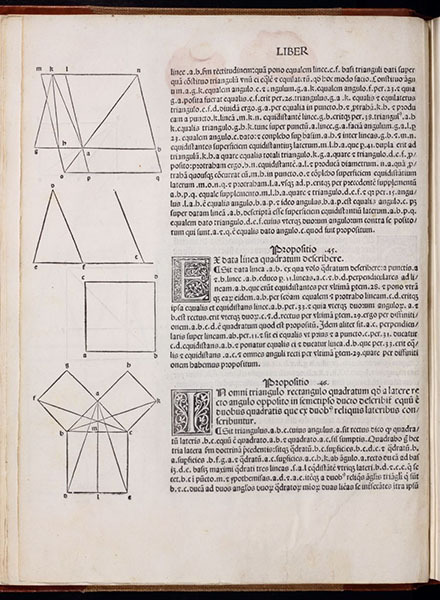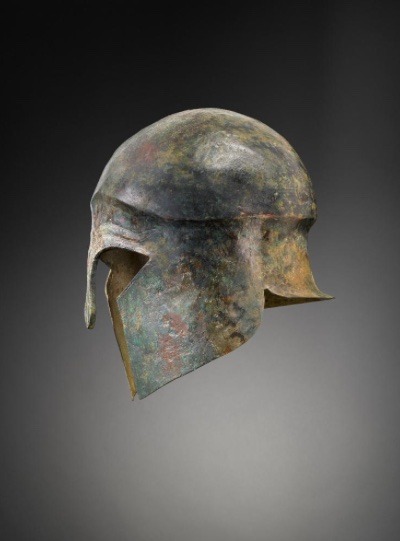#6th century bc
Explore tagged Tumblr posts
Text







Women in History Month (insp) | Week 4: Dynastic Daughters
#historyedit#perioddramaedit#women in history#women in history month challenge#my edits#mine#marie anne de bourbon-conti#princess hexiao#hanzade sultan#caroline bonaparte#marie-thérèse-charlotte de france#princess fukang#gorgô of sparta#french history#chinese history#ancient greece#17th century#18th century#19th century#11th century#6th century bc#5th century bc
198 notes
·
View notes
Text

Fox and the grapes
One afternoon a fox was walking through the forest and spotted a bunch of grapes hanging from over a lofty branch. Just the thing to quench my thirst," quoted the fox. Taking a few steps back, the fox jumped and just missed the hanging grapes. Again the fox took a few paces back and tried to reach them but still failed. Finally, giving up, the fox turned up his nose and said,
"They're probably sour anyway," and proceeded to walk away.
MORAL: IT'S EASY TO DESPISE WHAT YOU CANNOT HAVE
212 notes
·
View notes
Text







Pythagoras of Samos – Scientist of the Day
Pythagoras, an early Greek social reformer, religious thinker, and possible mathematician, was born on the island of Samos, just off the coast of Ionia, sometime around 570 BCE.
read more...
#Pythagoras#mathematics#harmony#histsci#histSTM#6th century BC#history of science#Ashworth#Scientist of the Day
47 notes
·
View notes
Text

Large ring/small arm ring with engraved ship in the boss, Mediterranean area, second half of the 6th century BC
27 notes
·
View notes
Text
"Men that love wisdom must be acquainted with very many things indeed." -Heraclitus (Greek Philosopher, c. 535 BC - 475 BC)
#philosophy#quote#quotes#wisdom#philosopher#greece#ancient greece#5th century BC#6th century BC#living#character
2 notes
·
View notes
Text


OLYMPIC MARINATED SKEWERS (6th c. BC)
I decided to go Greek for my next Tasting History dish: Olympic Marinated Skewers from around the 6th century BC in Ancient Greece. It's an Olympic year, after all! For this dish, Max focused on what an Ancient Olympic athlete might eat. To do this, he relied on descriptions found in the Oxyrhynchus Papyri, a group of manuscripts discovered during the late 19th and early 20th centuries by papyrologists Bernard Pyne Grenfell and Arthur Surridge Hunt at an ancient rubbish dump near Oxyrhynchus, Egypt. The papyri describe a dish of marinated liver with some herbs, a dish which may have been served around the time Ancient Greek Olympic athletes started incorporating meat into their training diets. Before this, dried figs, cheese, and barley bread were staples of the athlete. Of course, there was a wide variation of dishes on which athletes would have feasted during training; the Ancient Olympics were hosted for a very long time - from at least 776 BC to 393 AD (even lasting to the Roman period!) - and athletes came from across the Mediterranean area in order to compete. One of the Panhellenic Games of Ancient Greece, the Olympic games were a series of athletic competitions among representatives of city-states held at the Panhellenic religious sanctuary of Olympia in honour of Zeus. The initial sport was the stadion, a sprint inside a stadium, but more events were added over time. Speaking of time, in Ancient Greece, it would often be marked using the stadion winner's name for the four-year Olympiad.
The Olympic Games were so important that truces between city-states were enforced for its duration. While there was a long period of no Olympic Games (during the reign of Theodosius II, a fire at Mt. Olympus destroyed the venue), the Games were revived in their modern form more than a thousand years later by Baron Pierre de Coubertin, who founded the International Olympic Committee (IOC) in 1894, leading to the first modern Games in Athens in 1896. I may have a sweet spot for Olympic history, thanks to my years working in a museum covering the topic, so I couldn't help but give this dish a try, though admittedly with a few changes according to my palate (liver is not my thing). See Max’s video on how to make the dish here or see the ingredients and process at the end of this post, sourced from his website.
My experience making it:
For this recipe, I did take quite a few liberties which affected the final texture of the dish. Namely, I used chicken breasts instead of liver (I really don't like the texture of liver) and I used ripe figs instead of dried (because they are in season and I can't resist a good deal). However, I was sure to make the marinade exactly as written in an effort to stay true taste-wise - even finally caving and hunting down a bottle of asafoetida from a Sri Lankan shop quite far away from my house. Instead of the most authentic Paximadi bread (which I couldn't find), I used barley bread from my local grocery store bakery. I think there were other ingredients in it as well, but there was definitely barley, and that was enough for me to be persuaded. Finally, I didn't have any proper skewers handy at home, so I used some XL toothpicks.
Chopping my thyme and cilantro at the very beginning, I decided to go a bit out of order on the method and make the marinade before chopping the chicken into 1-inch pieces, but I can't see this having any effect on the outcome. I was sure to whisk constantly while adding the olive oil into the red wine vinegar. It was a little hard to combine, and I initially could see some olive oil separated on top, but with continued whisking it did finally combine. I whisked in the salt, asafoetida powder, cilantro, and thyme - it was already smelling delicious! I then chopped my chicken and submerged them in the marinade. There was just enough marinade to cover them. Because I forgot to prepare the marinade the night before, I made it in the morning and gave the chicken about 7 hours to marinate in the fridge. Not as good as Max's "overnight" recommendation, but I think better than just an hour right before dinner. When I decided we were getting hungry for dinner, I brought out the chicken, skewered the pieces with the toothpicks, and laid them onto a lined baking tray. I don't have a barbecue sadly, or even a patio/balcony for that matter, so the oven was the only option for me. For the oven temperature and cooking time, I looked up a generic chicken skewers recipe to give me advice. I ended up cooking the skewers at 400 F (205 C) for 15 minutes, then flipped the skewers once and cooked another 5 minutes on fan setting to get a bit more crisp (though they never really got very crispy on the edges anyway). While they were in the oven, I prepared the Greek salad (no olives for me), figs, feta cheese, and barley bread. The skewers looked pretty nice when finished; the herbs had darkened to a dark green colour and gave the chicken a fragrant aroma. I plated everything and ended up with a quite Greek-looking meal that I couldn't wait to taste.
My experience tasting it:
Of course, I just had to try the skewers first! The chicken was very tender and the flavour was very herby. It did taste like the chicken had really absorbed the marinade, but it wasn't wet in the slightest. I can only imagine that some char from being cooked over a fire would add so much both texture- and taste-wise, but the chicken didn't need it in order to taste wonderful. I think the asafoetida did add a faint oniony flavour which I quite liked, but wasn't entirely expecting. There was so little of it in the marinade that I thought it might be lost amongst the other ingredients. Next, I tried some barley bread. It was what it said on the tin - the usual brown-bread flavour and texture. It might be a bit surprising, but I had never tried an actual fig before. I've had figs in desserts before, where they impart their flavour, but never the actual hand-fruit. This is part of why I wasn't too bothered that I couldn't find dried ones. I tried a bite of the fresh, ripe fig and was pleasantly surprised - I liked it! Very fresh and sweet-tasting, with no hint of wasp (other than their historical role in diet and cooking, most of what I have heard about figs involves wasps dying inside them...). Taking a bite of feta right after some fig was a great idea. The sweet and salty combo, so well-beloved in salted caramel and the like, was a perfect marriage in this case. I would happily pair those two again. Come to think of it, I would make this whole dish again. The marinated skewers were juicy, with a complex and very Greek flavour to them. I might even consider using this same marinade on other meats, or adding a couple other fresh herbs to it ...specifically my all-time favourite: dill. It's a keeper, that's for sure. Ancient Greek Olympians ate well. If you end up making this dish, if you liked it, or if you changed anything from the original recipe, do let me know!
Harder-to-find ingredients:
Asafoetida
Olympic Marinated Skewers original recipe (c. 6th c. BC)
Sourced from the Oxyrhynchus Papyri (c. 6th c. BC).
Cut up good liver, marinate in oil with salt, cilantro, thyme, silphium juice, vinegar; grill on a spit at high temperature; serve.
Modern Recipe
Based on the Oxyrhynchus Papyri (c. 6th c. BC) and Max Miller’s version in his Tasting History video.
Ingredients:
1 lb (1/2 kg) calf’s liver (or another protein if liver isn’t your thing)
3 tbsp (45 ml) red wine vinegar
9 tbsp (135 ml) olive oil
1 tsp salt
A pinch of asafoetida powder*
A small bunch of cilantro, chopped
2 tbsp thyme leaves
Feta, for serving
Dried figs, for serving
Paximadi or other barley bread, for serving
*Asafoetida is used instead of the once common flower, silphium. While it was thought to be lost to history, it may have recently been found in Turkey - but either way, you probably won't be able to find some. Asafoetida is thought to be its close ancestor, and is a very pungent ingredient that imparts a garlicky/oniony umami flavor when cooked. Be sure to store it in a sealed container (or two) or your whole pantry will smell sulphurous. You can find it (sometimes as hing) at Indian markets or at the link above.
Method:
Cut the meat into bite-sized pieces, about 1”.
Pour the vinegar into a large bowl, then add the olive oil in a slow stream, whisking constantly. This will help the oil and vinegar emulsify. Whisk until well mixed, then whisk in the salt, asafoetida powder, cilantro, and thyme. Add the liver, making sure the meat is coated evenly and set it aside to marinate for an hour on the counter or in the fridge overnight.
Once the meat has marinated, put it onto skewers and grill over an open fire or in the oven. I cooked mine on a little grill for about 4 minutes on one side, then I flipped them and cooked them for another 4 to 5 minutes on the other side until they were cooked all the way through.
Serve the skewers forth with feta, figs, and paximadi for a complete meal fit for an ancient Greek Olympian.
#max miller#tasting history#tasting history with max miller#cooking#keepers#historical cooking#europe#ancient greek recipes#ancient greece#greece#olympics#chicken#skewers#figs#fruit#cheese#ancient cooking#ancient history#6th century bc#Oxyrhynchus Papyri#ancient meals#meat#herbs
1 note
·
View note
Text
AROACE BOTTLE

Perfume bottle, late 6th century BC-5th century BC, Greece.
#fashion#history#fashion history#history of fashion#historical clothing#lgbtqia+#aroace#asexual#aromantic#6th century bc#5th century bc
70 notes
·
View notes
Text
country bumpkin merlin not knowing anything about city life and accidentally courting arthur without knowing
merlin, watching gwen give lancelot her favor: why do you do that
gwen, heart eyes at lance and not paying that much attention to the conversation: so he knows i’m rooting for him
merlin, with an Idea: ah.
gwaine, lover of chaos, pisser offer of nobles and royals alike, ultimate wingman: merlin…you have such lonely lips. shall i introduce them to mine?
merlin, unaware of the game gwaine is playing: so you can steal my breath away? i think not, scoundrel
arthur, crushing his goblet in his hand:
merlin: arthur’s been in a bad mood recently :( i should cheer him up
merlin, remembering when arthur was put out when merlin brought morgana flowers and not him: i know just the thing
merlin, bringing a bouquet of carnations, roses, and tulips and setting them on arthur’s table while he’s eating breakfast: good morning, sire
arthur, trained on flower language in hopes that one day when he was to take a queen he could woo her easily, trying not to audibly choke on his sausage as he reads merlin’s declaration of love sitting in front of him:
arthur, who recently found out about merlin’s magic and was trying to find a way to bring it up, catching him in the act and watching merlin panic to explain himself:
merlin, Freaking: and i swear to you arthur, i have only ever used it for you. my magic is yours. my life is yours. i am yours. i would never do anything to harm you. i have protected you for years and will continue to do so at your side if you’ll have me
arthur, already believing them to be courting, desperately trying to figure out if that was a proposal for marriage or not but tired of being confused and deciding fuck it: here.
merlin, taking it: i…uh…huh?
arthur, watching merlin with hawk eyes and trying to figure out what he’s thinking and feeling: it’s my mothers sigil
merlin, confused as FUCK but is focusing on the fact that arthur is handing him something of his mother rather than a death sentence: my…my lord?
arthur, realizing how scared merlin’s must be about him finding out about his magic and trying to comfort him while also proposing, killing two birds with one stone: i will always keep you at my side, merlin, so long as we both shall live. if you’ll allow me.
merlin, almost collapsing with relief and tearing up, smiling at arthur as if he had parted the storm clouds to allow sun to shine down on them in that moment: of course…of course, arthur. always and forever.
merlin, watching the castle staff rush this way and that: wow. this banquet must be incredibly important
sir leon the long suffering, day one ride or die, one of the original merthur shippers: banquet? merlin, this is for your wedding
merlin, overworked and exhausted: my WHAT? to WHO??
leon, regretting everything he’s ever done in his life that led him to this moment: to…arthur?
merlin, over joyed but also absolutely befuddled: i’m getting married to ARTHUR?????
leon: you two have been courting for the past year or so, have you not?
merlin: i’ve been COURTING ARTHUR?????? FOR A YEAR?????????
#merthur#i spent like an hour researching medieval courting rituals to make this#and even then#i did not find much#so if there’s someone out there who is like weirdly knowledgeable about 6th century courting rituals#feel free to add on#bbc merlin#arthur pendragon#merlin emrys#sir gwaine#sir leon#sir lancelot#guinevere#i literally started this post bc i was thinking about the misunderstanding between merlin and gwen and merlin’s giving arthur his favor#and then i kept going#but i didn’t have much else in the ole noggin to write#i’m sorry#please forgive me
7K notes
·
View notes
Text
i love asking ppl if they’ve watched the knight before christmas bc they always go ‘oh… the nightmare before christmas??’, so innocent and blissfully unaware as i smile and go ‘no :) the knight :) with a k :)’ and i watch their confusion and horror grow as i explain to them the netflix original film the knight before christmas (2019) featuring vanessa hudgens.
#TIS FINALLY KNIGHT BEFORE CHRISTMAS SEASON#my most favourite badawful film ever ohhh my godddd#i love how cole gets 0 character development yet still completes his quest to be a true knight.#i love brooke knowing what authentic english 14th century armour looks like despite being a science teacher from ohio.#i love the inexplicable dog at the end. the old crone. cole’s christmas traditions that weren’t around in the 1300s.#the end of the film being set up for a sequel that never happened. GODBLESS 🩷🩷#the knight before christmas#truly the most ridiculous premise of all time. god i cannot wait to watch it for a 6th time#7th actually. i watched it twice last (?) year bc i watched it with my gf
12 notes
·
View notes
Note
Tunisia has Jewish people?
see what i mean
#nothing too important. only since like the 6th century bc#asks#anon#< guy whose url used to b lgbTUNIS
32 notes
·
View notes
Text
The article below has some extra information and artifacts about the history of the heart symbol not included in the wiki.
#random wikipedia articles#wikipedia#heart shape#ideogram#some people think the shape is based off the seeds of the fruit of silphium#the symbol has been around since 5-6th century BC#the symbol became associated with love during the Middle Ages#history
4 notes
·
View notes
Text

Corinthian Helmet of the Early Third Type 3rd quarter of the 6th century BC
The skull is set-off distinctly from the wall of the helmet. The pair of stylised eyebrows above the eye cut-outs converge above the nose. The raised rim which frames the brows continues downwards to form a central ridge on the lance-shaped nose-guard. small, closely spaced drill holes, some still with the remains of decorative rivets, adorn the edge cut-outs. The neck-guard curves outwards and is set off from the cheek-pieces. H. 21 cm.
#Corinthian Helmet of the Early Third Type#3rd quarter of the 6th century BC#bronze#bronze helmet#greek helmet#ancient artifacts#archeology#archeolgst#history#history news#ancient history#ancient culture#ancient civilizations#ancient greece#greek history#greek art
54 notes
·
View notes
Text


in the series of "stuff that made me laugh out loud": these two comments next to each other
5 notes
·
View notes
Photo
"Ancient Egyptians dedicated animal coffins like this wooden example in temples, tailoring the enclosed mummified animal to one that had a specific connection with the deity whose favor was sought. The mummified animal’s soul acted as a messenger between the human and divine realms, seeking resolution to issues such as illness or crimes committed against its dedicator. The feline form of this empty coffin suggests that it was presented to Bastet, a goddess revered for her motherly qualities who often assumed the form of a cat or cat-headed woman."

Sarcophagus (?) of a Cat, Ancient Egyptian, -664, Art Institute of Chicago: Arts of Africa
Gift of Emily Crane Chadbourne Size: 64.75 × 23 × 52 cm (25 ½ × 9 × 20 ½ in.) Medium: Wood
https://www.artic.edu/artworks/5522/
#cats#fauna-in-art#art#sculpture#sarcophagus#coffin#funerary goods#animal sacrifice#bastet#african art#egyptian art#ancient egypt#antiques#late period#ptolemaic dynasty#7th century bc#6th century bc#5th century bc#4th century bc#3rd century bc#2nd century bc#1st century bc#wood#carving
13 notes
·
View notes
Text
i just realised i’m just now getting into horror movies and i started off with the silent ones from the 1920s
5 notes
·
View notes
Text
please do look it up if you dont know the date bc there may be at least an approximate answer and otherwise the last option will completely dominate and this poll will be boring.
and dont be like 'but i cant sing'... just answer the earliest tune you know well enough that you COULD sing it
periods of western classical music provided only for reference
#i had to make this again bc i forgot to set duration#polls#hopefully i didnt bin the 20th c options too closely but we'll see#also i hope i got the century numbers right lol#im kind of jumping on that trend of bizarre music polls but hopefully this one will be actually interesting#still silly though
14K notes
·
View notes